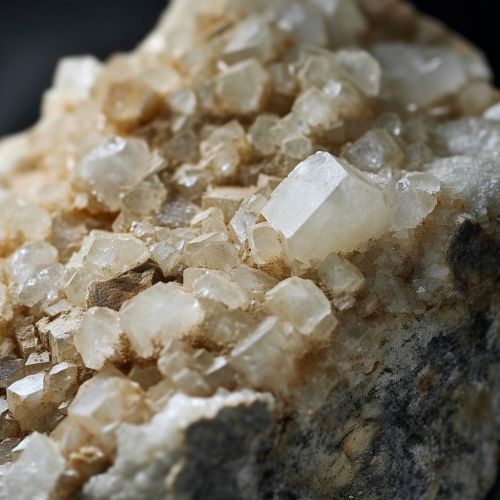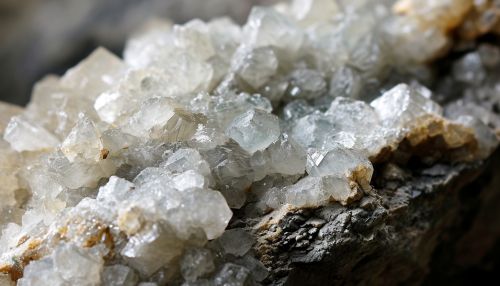Felsic
Introduction
Felsic is a term used in geology to refer to igneous rocks that are rich in light-colored minerals. The term is a portmanteau of "feldspar" and "silica", the two most abundant elements in these rocks. Felsic rocks are typically high in quartz, alkali feldspar, and plagioclase, and are often associated with continental crust due to their high silica content. They are contrasted with Mafic rocks, which are darker and richer in magnesium and iron.


Composition
Felsic rocks are primarily composed of quartz, alkali feldspar, and plagioclase. These minerals are high in silica, aluminum, potassium, and sodium, and low in iron, magnesium, and calcium. The high silica content (over 65%) of felsic rocks makes them highly viscous when molten, leading to explosive volcanic eruptions when they reach the surface.
Types of Felsic Rocks
There are several types of felsic rocks, including granite, rhyolite, dacite, and obsidian.
Granite
Granite is a coarse-grained, intrusive igneous rock that forms from slowly cooling magma deep within the Earth's crust. It is the most common type of felsic rock and is often used in construction due to its durability and aesthetic appeal.
Rhyolite
Rhyolite is a fine-grained, extrusive igneous rock that forms from rapidly cooling lava on the Earth's surface. It is similar in composition to granite but has a much finer grain size due to the rapid cooling process.
Dacite
Dacite is an intermediate to felsic, extrusive igneous rock. It is similar to rhyolite in composition but has a slightly lower silica content. Dacite is often associated with explosive volcanic eruptions.
Obsidian
Obsidian is a volcanic glass that forms when felsic lava cools rapidly without crystal growth. It is often black or dark brown in color and has a glassy luster.
Formation
Felsic rocks form from magma that is high in silica, aluminum, potassium, and sodium. This magma typically originates in the continental crust, where these elements are abundant. The magma can either cool slowly beneath the Earth's surface to form intrusive rocks like granite, or it can erupt onto the surface and cool rapidly to form extrusive rocks like rhyolite.
Characteristics
Felsic rocks are characterized by their light color, high silica content, and low density. They are typically less dense than mafic rocks due to their lower iron and magnesium content. The high silica content makes felsic rocks highly viscous when molten, leading to explosive volcanic eruptions. Felsic rocks also have a high resistance to weathering and erosion due to their mineral composition.
Geological Significance
Felsic rocks are significant in the field of geology as they are indicative of the processes occurring within the Earth's crust. The presence of felsic rocks can provide information about the tectonic environment, as they are often associated with continental crust and plate boundaries. They also provide insight into the composition of the Earth's crust, as the minerals found in felsic rocks are abundant in the continental crust.
Economic Importance
Felsic rocks, particularly granite, have significant economic value. Granite is widely used in construction for its durability and aesthetic appeal. It is used in everything from countertops to building facades. Obsidian, a type of felsic rock, was historically used by indigenous cultures for tool making due to its sharp edges when fractured.
